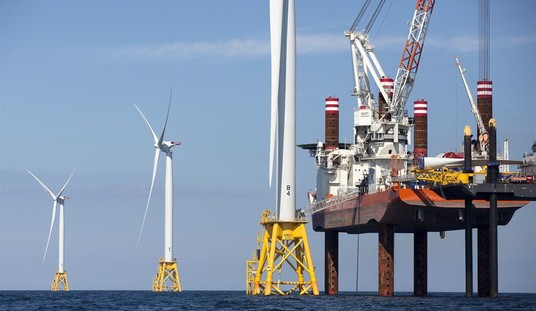For the last several years, early voting in some states has been significant, but never this significant. Thanks to the COVID-19 pandemic, states loosened restrictions on absentee ballots, expanded in-person early voting, and launched mass mail-in balloting to keep the election from becoming a superspreader event in the pandemic.
Americans have responded with a record-shattering early turnout — although how much of a record is still unclear. NBC announced a total early vote count of “nearly 97 million”:
Nearly 97M Americans have already cast their vote early, shattering records. It's important to remember today is the last day to cast votes, not the last day for votes to be counted. pic.twitter.com/I5rrBgECUD
— TODAY (@TODAYshow) November 3, 2020
CNN’s pollsters put the number above 100 million. Seven states appear to have already eclipsed their total votes from 2016, and another six are close to it:
These votes represent more than 47% of registered voters nationwide. Twenty-one states and Washington, DC, have seen more than half of their registered voters cast ballots already.
Pre-Election Day voting skyrocketed nationwide amid the ongoing coronavirus pandemic. At least six states — Texas, Hawaii, Nevada, Washington, Arizona, and Montana — have surpassed their total turnout from the 2016 general election in recent days.
In an additional seven states, the pre-election vote represents at least 90% of their 2016 total vote — North Carolina, Oregon, Colorado, New Mexico, Georgia, Florida, and Tennessee.
Nationwide, the 100.2 million ballots already cast represents 73% of the more than 136.5 million ballots cast in the 2016 presidential election.
Surveying “election officials” on this point seems like a waste of time. In the first place, there’s too much variance in polling for any precision on this question. In the second place, we’ll find out in the next couple of days when the totals from early voting get officially posted. This kind of polling data was more useful a couple of months ago or earlier to figure out what the scope of early voting might be.
Let’s just stipulate to the massive early turnout. What does it mean? Frankly, that’s hard to determine, although the saturation level in the thirteen states noted by CNN (based on its polling) suggests a much larger turnout than four years ago. But what would that mean? In large part, it might just mean that one party or the other (or both) cannibalized their normal turnout to get the early vote in first. Perhaps today’s turnout will be much smaller than projected. Probably not, but it’s possible.
If the early vote is over 100M, a substantial part of that will be mail-in voting. A substantial part of that will inevitably fail in one manner or another. Morning Consult polled on early voting methods, and found 42% used the mail:
According to our early voting exit polling, 7 in 10 early voters mailed their ballot or put it in a drop box. #Election2020https://t.co/ev0DY6YMjF pic.twitter.com/WECaCnB90Q
— Morning Consult (@MorningConsult) November 3, 2020
if 42% of those votes were by mail, then first we have to ask just how many got there in the first place. Even without that concern, perhaps as many as two million won’t be able to be counted at all. That’s a pretty big wildcard, especially in the battleground states, and especially because the early votes lean substantially Democrat, especially those by mail.
But perhaps not as much as we think. Right now, this looks like a high-turnout election. Normally, one would figure that to be good news to Democrats, and it probably would be in this cycle too. In states where we have official numbers of early votes by party, that hasn’t entirely been the case. Where Democrats normally run up the score, such as in Miami-Dade, Republicans have performed more strongly than anyone predicted in early voting. Democrats have largely failed to keep up a winning pace in those states. Those are not necessarily bellwethers for the rest of the states, but it is interesting to note that Donald Trump’s opposition to some forms of early voting didn’t discourage Republican voters from competing in them.
We can likely chalk that up to the RNC/Team Trump ground game, and the utter lack of competition from Democrats. This is what makes me somewhat more optimistic about a high-turnout election, too. That ground game has blown out Democrats in new voter registrations this year, and it’s designed to get out the vote. That may be what’s fueling the high turnout in this election — the new voters the GOP enrolled, plus their ability to create energy and enthusiasm through retail politicking. It’s likely why Trump’s rallies have rebounded after Tulsa (although moving them outdoors certainly helped), and if so, it will push Trump voters to the polls in one way or another.
Trump himself might be pushing Democrats to the polls, too. Team Biden bet the house on the idea that they didn’t need GOTV and a ground game because Trump’s unpopularity would prompt a high turnout among Democrats. That still might be true, although it’s clearly not true in Miami-Dade. It could be that both parties will have a high turnout. That wouldn’t be good news for Republicans, as Democrats have an advantage in party ID that will result in narrow wins under those circumstances.
At this point, though, the only thing we can do is to get out and vote if we haven’t yet done so. Keep an eye on those turnout numbers, though; we’ll know who won the ground-game bet soon.








